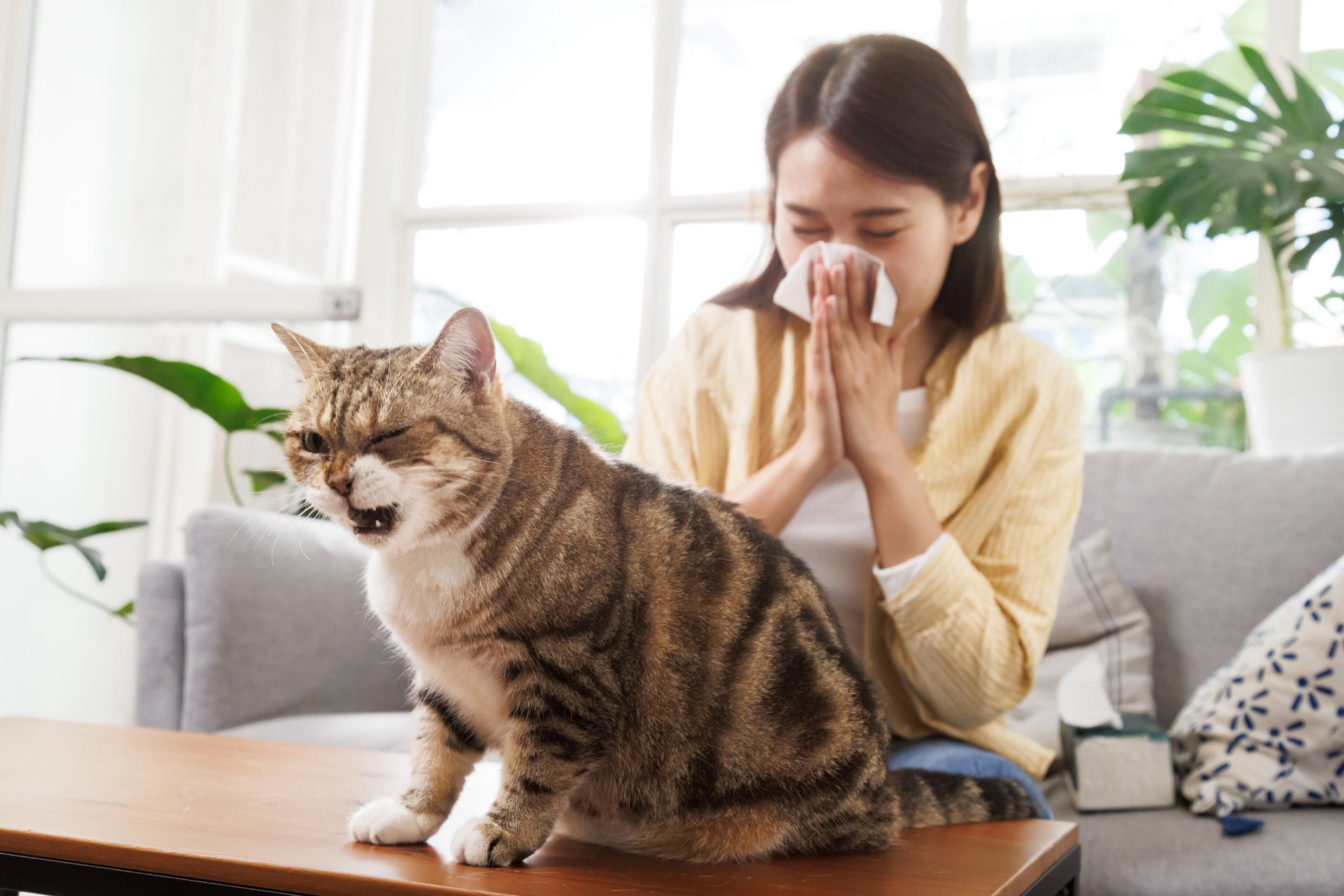As the weather gets colder and people spend more time indoors, they are at a heightened risk of falling ill from cold, flu and other infections.
While most people are mindful of this fact following the pandemic, they may not realize that some of the worst health threats are actually lurking inside their own homes.
Experts say that dangerous bacteria, gas and other irritants found in home appliances and fireplaces can be just as harmful to our health – especially for the more than 80 million Americans who suffer from allergies.
“If nasal congestion does not go away after a week or two, you might have allergies, not cold or flu, especially if eyes are itchy or watery,” Columbia University Medical Center allergist Joel Brooks explained.
Much of the U.S. has already faced a record-breaking Arctic chill this year and it’s going to get colder. There are some things you should be aware of before you turn up the heat.
The toll of being toasty
Mold infestations in HVAC systems can spew out dangerous spores that lead to red eyes, congestion and even wheezing, according to Johns Hopkins University.
“In extreme cases with what we call black mold, you can have flu-like symptoms, diarrhea, headaches, and severe respiratory distress,” Professor Marsha Wills-Karp, chair of the Department of Environmental Health and Engineering, said. “It can be quite bad, and younger children are more susceptible than adults.”
Heating systems also dry out the air and your nose’s mucous membrane tissues, making them less effective at trapping bacteria and other particles, and leaving your sinuses vulnerable to infection.
Over time this can irritate the nose and make it harder for you to breathe or cause nosebleeds, according to Southern California’s DelRey MD.
The systems can circulate dust and other allergens throughout the home, worsening allergy symptoms.
To prevent this, people can use a humidifier, nasal sprays and drink water. Just be sure to clean the humidifier as that can also grow mold.
Fire prevention
Gathering around a fireplace with a cup of hot cocoa may sound like a good idea. But experts say it could also lead to a trip to the ER.
A faulty fireplace, furnace, portable generator, heater or wood-burning stove may produce carbon monoxide. The invisible gas can cause a loss of consciousness in just a few breaths and death within between hours to just a couple of minutes at high concentrations of over 800 parts per million.
Levels near gas stoves are typically only around five to 15 parts per million, according to the Environmental Protection Agency.
“Since you cannot see, smell, or taste carbon monoxide, you may not be aware that you are breathing it,” Dr. Christopher Holstege, the director of the University of VirginBlue Ridge Poison Center’s director, said.
Still, even if your exposure does not build to levels high enough to be lethal, breathing in the gas can cause headaches, nausea, vomiting, chest pain, dizziness, weakness and convulsions.
A carbon monoxide detector can tell you if you and your family are in trouble. Just be sure to change the batteries every six months.
“A good time to do this is when you adjust your clocks for daylight saving time,” University Hospitals advises.
What’s in my sheets?
Most people don’t want to think about it, but there are millions of defecating microscopic creatures in bed with us every night.
Dust mites, which can be a problem year-round, are found in four out of five homes, according to the American Lung Association. They live off the dead skin we shed and thrive in warm, humid settings and most of our exposure to them occurs while we’re asleep.
But, although they are often more gross than they are troublesome, they are also one of the major indoor triggers for people with asthma.
Exposure may cause watery eyes, runny nose, a persistent cough and sneezing or even a severe asthma attack.
“They’re not going to kill you, but they can cause a lot of illness,” Wills-Karp noted. “It’s actually their fecal material that we’re allergic to, causing red eyes, sneezing, coughing, and shortness of breath.”
They can also live in clothing that’s not washed frequently, including water coats.

People can reduce their exposure by keeping their homes below 50 percent humidity with dehumidifiers, and replacing areas where the mites may live.
Dusting regularly, cover pillows with allergen encasements, and wash bedding in water that is at least 120 degrees Fahrenheit once a week.
Cat concerns
Pets, that live in about six out of 10 U.S. households, are another common source of a sneeze or wheeze. Felines and other four-legged friends shed minuscule particles known as dander that can cause an allergic reaction.
Many of the allergens are small enough to enter the lungs, making it hard to breathe. Pet allergies are especially common if you have asthma, and most doctors suggest that people who suffer from allergies to animal dander not have pets with feathers or fur.
There is also no such thing as a non-allergic dog or cat, the Asthma and Allergy Foundation of America says.
“People with dog or cat allergies may tolerate some breeds more than others. People may think those breeds are ‘hypoallergenic,’ but a truly non-allergic dog or cat does not exist,” the foundation wrote.
Keeping pets out of their bedroom, washing their toys often and having professionals bathe and brush them on a regular basis should help.
Also consider investing in an air purifier.
“Air purifiers with HEPA filters help filter out cat allergens, which cling to dust in the air,” Dr. Rauno Joks, an allergist with NYC Health + Hospitals/Kings County, told the New York Post.

